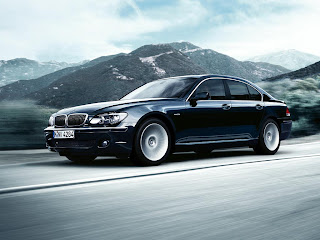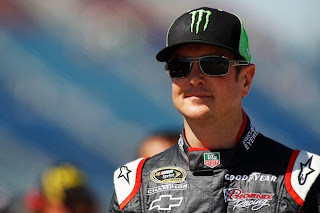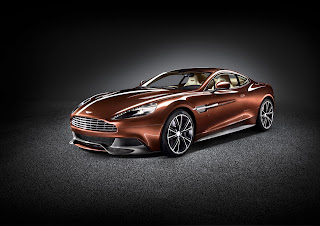The first all-new Corvette since the C5 in 1996 has been officially revealed to the press tonight at an event in Detroit. During the presentation, GM laid out all of the aspects of the new car which I will outline below.
A "New Car" But The Same Formula:
 |
| 2014 Corvette - Photo Courtesy Of Edmunds |
The Corvette C7 may be a new car but that does not mean that the essence of the Corvette has changed. The 2014 Corvette will remain a two-piece hatch back body with a rear-mounted transaxle and a front engine.
When it comes to the hardware of the new C7 generation, it is clear that GM is making an effort to attract drivers worldwide to the brand without disappointing traditional Corvette owners. The Corvette will be offered in two variations. The base version has officially been touted the "Stingray." Additionally, GM also announced a high performance version known as the Z51.
An All New Chassis and Weight Saving Techniques:
 |
| 2014 Corvette - Photo Courtesy Of Edmunds |
While both of these cars vary in performance, they will both feature an all new, entirely aluminum chassis. This is a major change from the C6 variant where only the Z06 and ZR1 models featured the entirely aluminum chassis.
One major benefit for the Corvette is the weight reduction as a result of the aluminum chassis. Its assembly begins with hydroformed side sills that are then joined to hollow sand castings in the front and rear of the chassis, die-cast inner tunnel structures, stamped bulkheads, and extruded crash sections at both ends. The final assembly stage is the bonding, bolting, and welding on the pieces resulting in a chassis that is 99 pounds lighter and 57% stiffer than the chassis from the C6.
Additionally, GM also used hollow sand-cast aluminum subframes and front lower control arms to cut additional weight. The balsa wood-core floor panels have also been replaced with fiberglass and a synthetic foam core.
Finally, the C7 will feature a carbon-fiber hood and removable carbon fiber roof panel in addition to fiberglass front fenders, door skins, rear-quarter panels and deck.
Amazingly, the new C7 is still heavier than the outgoing C6. While the number has not been revealed, the additional hardware and safety technology makes it unlikely that the car will be any lighter than before. However, the car is expected to have a 49/51 weight distribution and be around 100 pounds heavier than the outgoing C6.
The Drive:
For those not familiar with the current Corvette, it is more of a classic muscle car than a sports car. The C6 was designed to go in a straight line and it completely lacked finesse. While this is a brand of honor for most Corvette owners, it was not very helpful boosting sales.
As part of improving the driving dynamics, GM worked to address the vague steering of the C6 by beefing up the rack-and-pinion steering system and switching to electric power steering (although it is hard to see this as helpful).
 |
| 2014 Corvette Drive Select- Photo Courtesy Of Edmunds |
One major new feature is a knob on the console that will modify the settings of the car in five different ways. As you go through each setting, the throttle mapping, steering assist/ratio, stability control, cylinder deactivation (which seems a bit pointless in a 450hp sport car), aggressiveness, differential, and suspension calibrations of the Z51 model all change. And if you don't like the way they change, you can even adjust and reprogram the settings as you see fit.
In order to compete with the 911 benchmark, GM also decided to ditch the Goodyear tires of the C6 for Michelin Super Sport tires on both models. While the size remains the same (245/40 in the front and 285/35 in the rear) the Z51 offers lower-profile tires (245/35 front and 285/30 rear) while both models also featuring larger breaks resulting in a 60-0 breaking distance of 11 feet less than the outgoing model.
The Power:
 |
| Corvette LT1 V8 - Photo Courtesy Of Edmunds |
The new C7 will feature that brand new 6.2-liter LT1 V8 power plant which has been preliminarily rated at 450 horsepower and 450 Pound-feet of torque. In the Corvette, this will be good for a 0-60mph time of under four seconds. Additionally, (what I consider to be good news), GM has decided to dump a rumored automated manual gearbox and stick with two options: a six-speed automatic and a brand new seven-speed Tremec TR6070 manual. In the Tremec, the transmission receives a throttle blipping rev-matching feature as well as a twin-plate clutch and a dual mass flywheel.
One interesting thing to note is that the new seven-speed manual has the same exact gear ratios as the six-speed in the C6. In the C7, the seventh gear just acts as a massively-tall overdrive gear to raise the fuel economy (expected to be around 16/26 mpg for the manual).
The Z51:
 |
| 2014 Corvette - Photo Courtesy Of Edmunds |
The Z51 is a magnificent upgrade over the base Stingray model. The high performance Vette will receive a dry-sump oiling system, shorter gearing (similar to that of the current Grand Sport), larger Bilstein dampers, a rear stabilizer bar, and stiffer leaf springs. Additionally, as mentioned earlier the Z51 will include low profile tires that will be mounted to forged wheels raising the size to 20 inches from the Stingray's 19".
You will also get a rear deck spoiler to reduce lift and prominent air inlets in the rear fenders to feed heat exchangers for the transmission and differential. While on the differential, the Z51 receives a trick differential that is a hydraulic clutch pack that modulates the rate at which the differential apportions torque across the axle.
Finally, the Z51 gains a Magnetic Ride Control to help provide handling prowess and a compliant ride.
Say Goodbye To Bad Interiors:
 |
| 2014 Corvette Interior - Photo Courtesy Of Edmunds |
The C7 features a fantastic new interior a far step away from the dollar store interior of previous Corvettes. The base plastic has been replaced with soft-touch surfaces and leather. There will also be two different seats available: a base seat and a sport competition seat.
One look at the angled dashboard makes it clear that the driver is the focus of the Corvette's interior. The car also pulls from its exterior styling to design the instrument binnacle and the HVAC controls. You will also find carbon fiber throughout the interior.
The Exterior Blows Away Past Corvette's:
 |
| Rear Fender Vents - Photo Courtesy Of Edmunds |
While this car may not look much bigger than the outgoing C6, it is two inches longer (176.9 inches) and an inch wider (73.7"). You will also be treated to a larger wheelbase (up an inch to 106.7") and track widths increase an inch on both ends (61.7" in the front and 62.9" in the rear).
One complaint with the C7 is that it pulls a few styling cues from the Camaro including the aggressive trapezoidal taillights and the quadruple-barreled tailpipes in the center of the rear valance.
However, it is nice to see that the C7 is less slapped together compared with previous Vette's. This car looks like people actually took the time to make the components fit together in the car. Even the performance aspects of the design look good including the hood-mounted grille used to let one-third of the air out coming in through the front grille to reduce front end lift while also cooling the engine.
Finally, the C7 pulls some styling aspects from the C6.R ALMS racecar including fender-mounted vents in the rear leading to fixed rear quarter windows (shown above).
Final Notes:
You can expect to see the new C7 in a showroom near you in the not-too-distant-future. While pricing has not been released, it is rumored to be around $54,000 for the base model which would rival the Ford Shelby GT500.
I do hope that this new Vette will be as fun to drive as it is fun to look at. Only time will tell.































